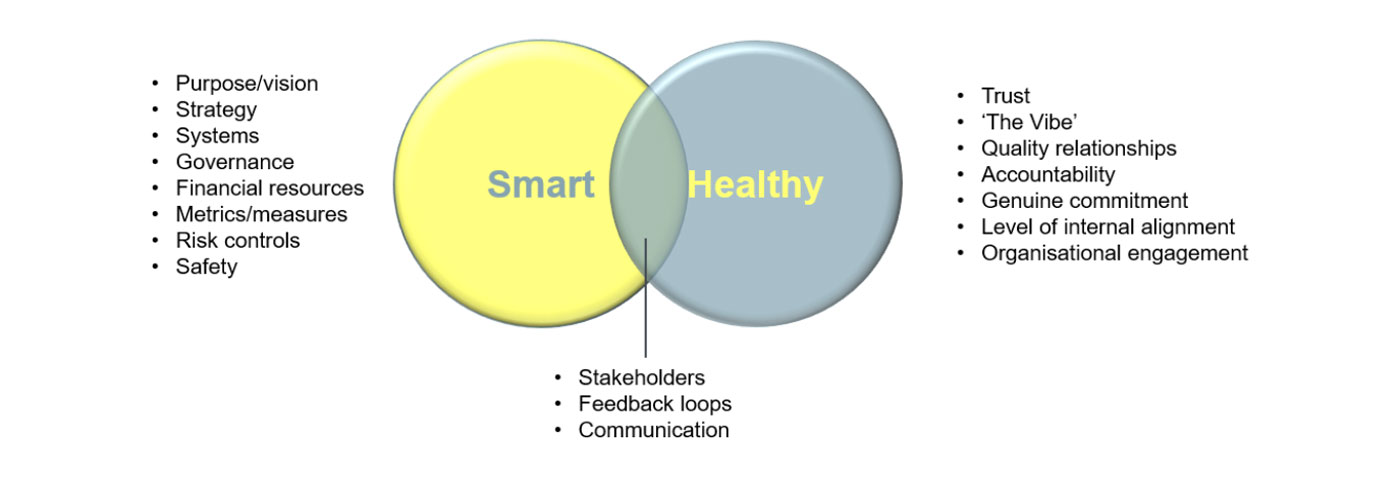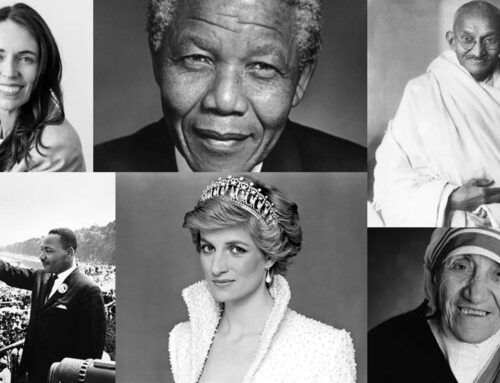
When Smart and Healthy Balance
A state of equilibrium is achieved when rightward forces are balanced by leftward forces and upward forces are balanced by downward forces. It is sometimes talked about as a state of dynamic tension.
Importantly, equilibrium does not necessarily mean that all the forces at play in any given situation are equal to each other. Rather, it just means that, in total, they are in balance.
Why am I writing about equilibrium? In recent years I have regularly spoken to senior executives about a conceptual framework I call Smart & Healthy. I’m almost always asked if there is something more people can read about this framework. So, here it is!
What is Smart & Healthy?
Smart & Healthy is a conceptual framework that helps senior executives achieve equilibrium. It declutters the noise of their work and identifies the critical areas where they can, and must, focus for the good of their organisation.
Apart from everything else that keeps a leader busy, they need to simultaneously manage two principal agendas, namely Smart & Healthy.
Examples of the subject matter that might be on your Smart & Healthy agenda include:

Examples of the subject matter that might be on your Smart & Healthy agenda include:
On the Smart side of the equation are the critical ingredients organisations need to succeed. They are typically the things taught in business schools, monitored by boards and reinforced by organisational customs. They are completely necessary. Yet, on their own, they are insufficient in helping organisations truly succeed and achieve their potential.
Healthy factors are sometimes described as ‘soft skills’. It is a description that belies their true value. I prefer to think of them as the intangibles. They are the qualities that can speed you up or slow you down – and they are necessary if you seek to create an environment where people and your organisation can thrive.
Just as Leonardo da Vinci could balance art and science, we must be able to do much the same. Because the truth is, an organisation can have the most amazing strategy, with tightly aligned internal hard and soft systems, and all the measures and indicators you desire, but if the organisation also has unhelpful conflicts, has disengaged teams, lacks commitment or accountability, it will never truly achieve what it set out to achieve. By contrast, an organisation that is in a state of equilibrium, with a balance between smart and healthy, may still experience tensions, but they will be managed in a more dynamic and balanced way.
What’s the evidence?
Back in 2012 Patrick Lencioni wrote about a similar concept in The Advantage. Since then, McKinsey’s (2017), Sydney University (2019) and the Institute of Civil Engineers (UK) (2022) have come to similar conclusions. While the terminology may differ, there’s increasing evidence that it is the interplay of the smart AND healthy factors that enable organisations to perform.
And here’s the kicker – this is leader led. If the senior leaders in your organisation are not mindful of the need for balance or are not managing and prioritising a Smart and Healthy agenda, then who is? The answer of course is no one.
Time to test how you’re tracking
I encourage you to try this quick test. Review the last 6 meeting agendas your senior team has worked on. What did you talk about and where did you focus your time and energy? It is a snapshot rather than a detailed analysis and you’ll quickly see how balanced your agendas are.
I’m not suggesting in future you focus 50:50 or target an ideal number. Remember, equilibrium doesn’t require all forces to be equal measure. At the same time, we know it can’t be 100:0 or 0:100. The review will give you a good indication of what agenda items are using up the oxygen and which ones are struggling to draw breath.
Be disciplined with your Smart & Healthy agenda. Healthy should never be a 2-minute conversation at the end of the meeting where we tick the box – it’s too important for that. Think about how you will structure your agenda and run your meetings to have the greatest impact.
Trust your intuition as you navigate this and be wary of patterns and habits. Senior teams have learned and developed strong smart skills and habits and our careers have been rewarded accordingly. Boards tend to further reinforce these skills through board packs, analysis, papers, and so on.
Given the above, senior teams spending time developing a new muscle that facilitates the intangible attributes of your organisation may feel awkward, clumsy and unnatural. Time, practice and being well supported, by working with a team coach, can help leaders develop this new muscle. Leonardo da Vinci would be proud.
Chris Corneil
Partner at ECI Partners.
To connect with our executive coaching experts please contact us here.


